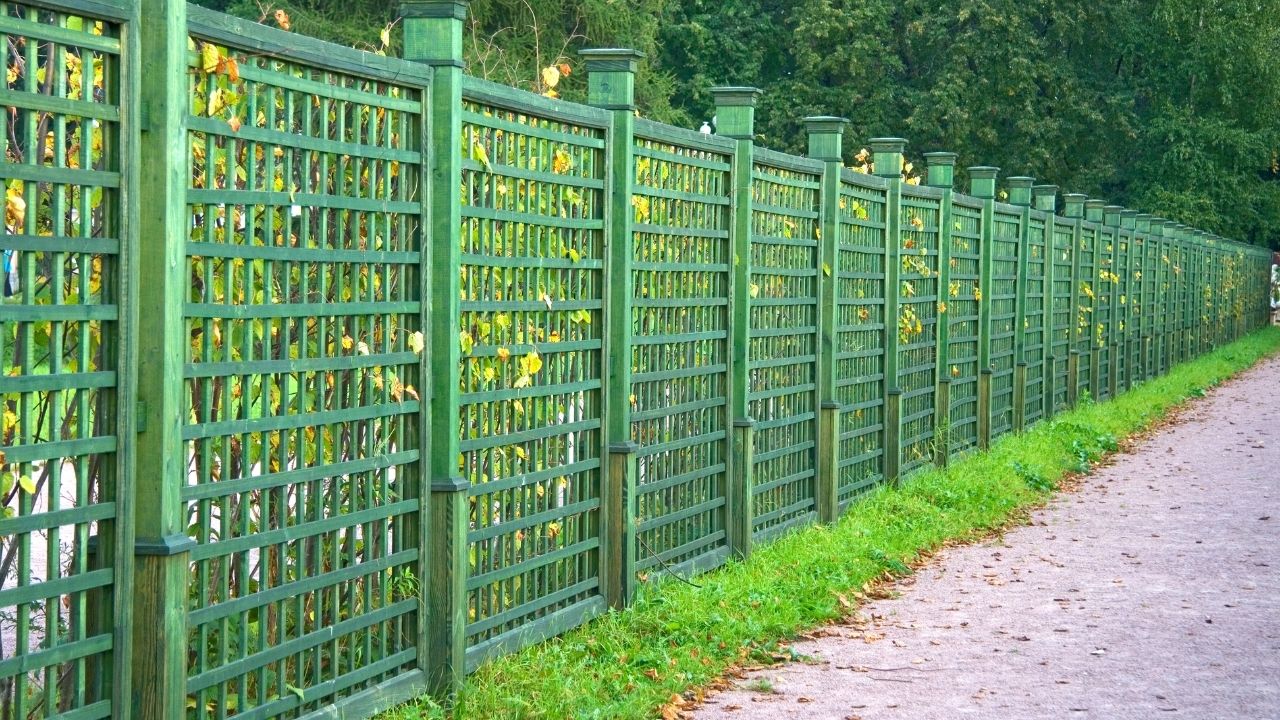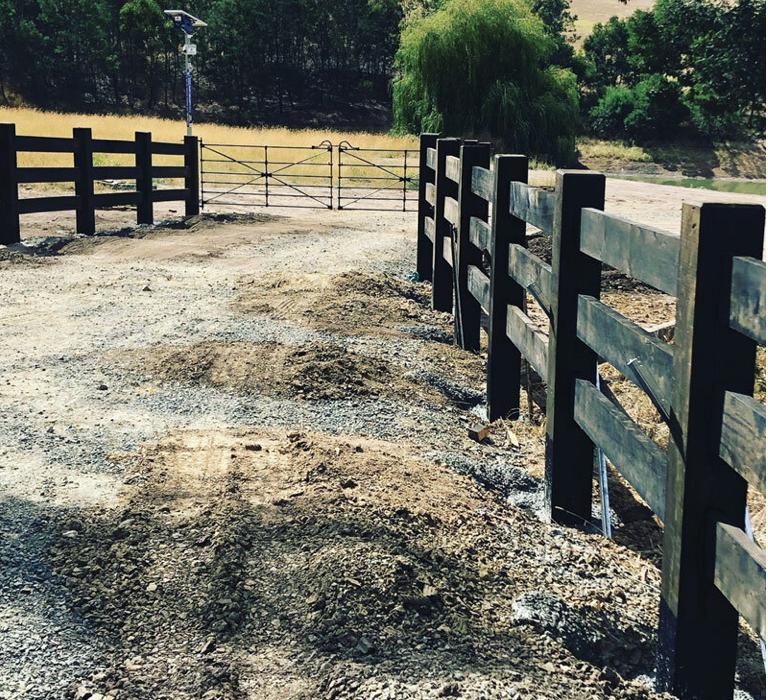
A fence is one way to protect your vegetable garden against pests. Rabbits, groundhogs, and other furry creatures can damage your crops. These are some ways to create a fence that keeps these animals out. These tips can help you keep your plants safe from being attacked by animals. A variety of colors can make your vegetable gardens more appealing.
Your vegetables can be damaged by insects. Netting is a good option if you have an animal problem. This fence is not very visually appealing but will keep your garden safe from small animals such as rabbits. This fence will not only keep animals out but will also add beauty to your yard. Pallets can be used as fencing. You can make a gate out of pallets once you have them.

Free materials can be found online for those who can't afford fences. For free materials, you can also check out newspaper advertisements. Another option is to create your own fence. A local building material shop will sell you lattice panels or posts. These fences are inexpensive and can support climbing vegetables. You can even leave small openings in the fence to keep small garden pests out. By using a fence, you can also make your garden more beautiful and deer-proof.
You can use a fence as a feature wall. To create a focal point, you can paint the fence in a bold color or a pattern. The picket fence is another good option. It can keep animals out and allow you to have a great view of your vegetable patches. This type of fencing can be used to separate a vegetable garden or increase privacy. Just be sure to choose a design that complements your home.
You can put up a fence to protect your plants from hungry predators. A wooden fence can be used or vinyl or wrought-iron pickets. A wooden fence lasts longer and needs less maintenance. It will also keep out any animals. If you want to protect your vegetables from raccoons, consider a fence with a chicken wire mesh. If an animal attempts to climb the fence, the wire will bend backwards.

Another way to protect vegetables from pests is to add a fence. A fence can protect your vegetables from pests such as rabbits and deer. If you have chickens, you can also use chicken wire or bamboo to protect your vegetable garden. You can also install a 3 foot or higher mesh to act as an animal barrier. You can prevent most animals accessing your plants with these materials.
FAQ
Is it possible to live in a house that is being renovated?
Yes, you can live in your house while you renovate it.
Are you able to live in your house while the renovations are ongoing? The duration of the construction works will affect the answer. If the renovation process lasts less than 2 months, then yes, you can live in your home while it's under construction. You cannot live in your house while the renovation process is ongoing if it lasts more than two years.
Because of the possibility of falling objects, you shouldn't live in your home while a major construction project is underway. There is also the possibility of dust and noise pollution from the heavy machinery at the job site.
This is particularly true if you live on a multi-story home. This is because the vibrations and sound created by construction workers could cause serious damage to your property.
As we mentioned, temporary housing will be necessary while your home is being renovated. This means you won't be able to use all the amenities in your own home.
When your dryer and washing machine are in repair, for example, you won't have access to them. You will also have to put up with the smell of paint fumes and other chemicals as well as the loud banging sounds made by the workers.
All of these factors can create stress and anxiety for you and your loved ones. You should plan ahead to avoid feeling overwhelmed by this situation.
When you decide to start renovating your home, it is best to do some research first so that you can avoid making costly mistakes along the way.
A reputable contractor can also be of assistance to you in order to make sure everything runs smoothly.
How often should my furnace filter be changed?
How often your family expects to use the heating system in their home will determine the answer. It is worth changing your filter more often if you intend to spend a lot of time outside during winter months. However, if you rarely go out of the house, you may be able to wait longer between changes.
A typical furnace filter lasts approximately three months. This means that your furnace filters should be changed every three to four months.
For information on when to replace your filter, you can consult the manufacturer. Some manufacturers recommend replacing your filter after each heating season, while others suggest waiting until there is visible dirt buildup.
How do I choose the right contractor?
Ask family and friends for referrals when looking for a contractor. Check out online reviews. Check to make sure the contractor has experience with the type of construction you are looking for. Refer to previous clients and verify their references.
Is there any way to save money when renovating my home?
You can save money by doing most of the work yourself. Reduce the number and frequency of people you hire for the renovation. You might also look for ways to decrease the cost and use of materials in the renovation.
Statistics
- The average fixed rate for a home-equity loan was recently 5.27%, and the average variable rate for a HELOC was 5.49%, according to Bankrate.com. (kiplinger.com)
- Rather, allot 10% to 15% for a contingency fund to pay for unexpected construction issues. (kiplinger.com)
- It is advisable, however, to have a contingency of 10–20 per cent to allow for the unexpected expenses that can arise when renovating older homes. (realhomes.com)
- They'll usually lend up to 90% of your home's "as-completed" value, but no more than $424,100 in most locales or $636,150 in high-cost areas. (kiplinger.com)
- Design-builders may ask for a down payment of up to 25% or 33% of the job cost, says the NARI. (kiplinger.com)
External Links
How To
Do you want to renovate your interior or exterior first.
Which one should you do first?
There are many factors to consider when deciding which project to start with. The most important factor to consider is whether the building has been around for a while. If the building is old, then there are many things to take into consideration such as the condition of the roof, windows, doors, flooring, electrical system, etc. If the building is new, then there are many different aspects to think about such as the location, size, number of rooms, style, etc.
If the building has an older roof, it is worth looking at the roof first. If it looks like the roof could collapse any minute now, you may want to start on the renovation. You can proceed to the next step if the roof is in good condition. Next, take a look at the windows. You might need to replace them if they are damaged or stained. You can then go through your doors and clean them. Then, if everything seems okay, you can begin working on the floors. It is important that your flooring is strong and stable so that it will not give way no matter what you do. After you have completed these steps, you can move on the walls. You can now examine the walls to check for cracks or damage. If the wall is fine, then you should proceed to the next step. After the walls have been inspected, it is time to inspect the ceiling. It is important to inspect the ceiling and ensure it is strong enough for any weight you may place on it. You can then move on with your renovation if everything looks good.
If the building was newly built, you'd probably start with its exterior. Start by looking at the outside. Is it clean? Are there cracks anywhere? Is it in good condition? If your exterior isn't looking great, you should make some changes. You don’t want to make your home look bad. Next, you need to inspect the foundation. If your foundation appears weak, you should fix it. Also, inspect your driveway. You want it to be smooth and flat. If it isn’t then it is time to repair it. When checking the driveway, also check the sidewalk. If it's uneven, then you should probably replace it.
These areas should be checked before you move on to the inside. Begin by inspecting the kitchen. Are you satisfied with the cleanliness and maintenance of your kitchen? You should clean up any mess. Next, check the appliances. These appliances should be in top shape and functioning properly. If they aren’t in great shape, then either you buy new ones or replace them. Next, inspect the cabinets. You can paint them if the cabinets are stained or damaged. If they're in good condition, you can move on to the bathrooms. Here, check the toilet. If it leaks, then you should probably get a new one. You can wash it if it is just dirty. Next, check out all the fixtures. Check that the fixtures are clean. They should be cleaned if they are dirty. You should also inspect the countertops. You should repaint countertops that are cracked or chipped. Use a sealant if they're shiny and smooth.
Final step: Check your furniture. You should make sure nothing is broken or missing. If something is missing or damaged, then you should likely find it. If it is damaged, you should probably fix it. Once everything is checked, then you can move back outside and finish the job.